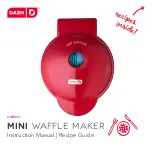
DIAGRAM
PART
PART
NUMBER
DESCRIPTION NUMBER
1
Pasta Machine Body
N/A
2
C-Clamp
01-0217
3
Handle
01-0216
4
Pasta Lid
01-0705
5
Auger Assembly
01-0703
A. Auger
B. Auger Housing
C. Auger Lock
6
Front Ring Nut
01-0706
7
Ring Nut Wrench
01-0707
8
Cutter Spatula
01-0708
9
Disc Kit
01-0704
D. Bucatini Disc
E. Mezze Penne Disc
F. Tortiglioni Disc
G. Rigatoni Disc
H. Fusilli Disc
I. Disc Rack
Not Shown
Rubber Foot (4)
01-0211
10
Mixing Kit
01-0702
J. Mixing Paddle
K. Front Cap
L. Enclosed Mixer Lid
COMPONENT LIST
-3-
-14-
PART
PART
DESCRIPTION
NUMBER
Traditional Pasta Machine
01-0201
Deluxe Electric Pasta machine
01-0601-W
5.5 Quart Stainless Steel Colander
66-0105-W
Food Strainer & Sauce Maker
07-0801
Deluxe Electric Tomato Strainer
82-0202-W
ADDITIONAL ACCESSORIES AVAILABLE
These products and many more products can be ordered by visiting
W e s t o n P r o d u c t s . c o m
or by calling
Weston Products LLC Toll Free at 1-800-814-4895
Monday thru Friday 8:00am-5:00pm EST. Outside the U.S. call 440-638-3131
If any components of this unit are broken or the unit does not operate
properly, call Weston Products LLC
Toll Free at
1-800-814-4895
Monday thru Friday 8:00am-5:00pm EST. Outside the U.S. call 440-638-3131
There are basic rules to follow when handling food.
They are
COOK, SEPARATE, CLEAN,
and
CHILL.
COOK
It’s crucial to cook food to a safe internal temperature to destroy bacteria that is present. The safety of
hamburgers and other foods made with ground meat has been receiving a lot of attention lately, and with
good reason. When meat is ground, the bacteria present on the surface is mixed throughout the ground
mixture. If this ground meat is not cooked to at least 160
o
F to 165
o
F (71
o
C to 74
o
C), bacteria will not be
destroyed and there’s a good chance you will get sick.
Solid pieces of meat like steaks and chops don’t have dangerous bacteria like E. coli on the inside, so they
can be served more rare. Still, any beef cut should be cooked to an internal temperature of at least 145
o
F
(63
o
C) (medium rare). The safe temperature for poultry is 180
o
F (82
o
C) and solid cuts of pork should be
cooked to 160
o
F (71
o
C). Eggs should be thoroughly cooked too. If you are making a meringue or other
recipe that uses uncooked eggs, buy specially pasteurized eggs or use prepared meringue powder.
SEPARATE
Foods that will be eaten uncooked and foods that will be cooked before eating MUST ALWAYS be
separated. Cross-contamination occurs when raw meats or eggs come in contact with foods that will
be eaten uncooked. This is a major source of food poisoning. Always double-wrap raw meats and place
them on the lowest shelf in the refrigerator so there is no way juices can drip onto fresh produce. Then
use the raw meats within 1-2 days of purchase, or freeze for longer storage. Defrost frozen meats in the
refrigerator, not on the counter.
When grilling or cooking raw meats or fish, make sure to place the cooked meat on a clean platter. Don’t
use the same platter you used to carry the food out to the grill. Wash the utensils used in grilling after the
food is turned for the last time on the grill, as well as spatulas and spoons used for stir-frying or turning
meat as it cooks.
Make sure to wash your hands after handling raw meats or raw eggs. Washing hands with soap and water,
or using a pre-moistened antibacterial towelette is absolutely necessary after you have touched raw meat
or raw eggs. Not washing hands and surfaces while cooking is a major cause of cross-contamination.
CLEAN
Wash your hands and work surfaces frequently when you are cooking. Washing with soap and warm
water for at least 15 seconds, then dry with a paper towel.
CHILL
Chilling food is very important. The danger zone where bacteria multiply is between 40
o
F and 140
o
F (4
o
C
and 6
o
C). Your refrigerator should be set to 40
o
F (4
o
C) or below; your freezer should be 0
o
F (-17
o
C) or
below. Simple rule: serve hot foods hot, cold foods cold. Use chafing dishes or hot plates to keep food hot
while serving. Use ice water baths to keep cold foods cold. Never let any food sit at room temperature for
more than 2 hours - 1 hour if the ambient temperature is 90
o
F (32
o
C) or above. When packing for a picnic,
make sure the foods are already chilled when they go into the insulated hamper. The hamper won’t chill
food - it just keeps food cold when properly packed with ice. Hot cooked foods should be placed in shallow
containers and immediately refrigerated so they cool rapidly. Make sure to cover foods after they are cool.
NOTE: Special considerations must be made when using venison or other wild game, since it can become
heavily contaminated during field dressing. Venison is often held at temperatures that could potentially
allow bacteria to grow, such as when it is being transported. Refer to the USDA Meat and Poultry
Department for further questions or information on meat and food safety.
FOOD SAFETY
CAUTION!
It is important to follow the “Food Safety” guidelines outlined in this
manual. For the most up to date instruction visit the USDA website.


























